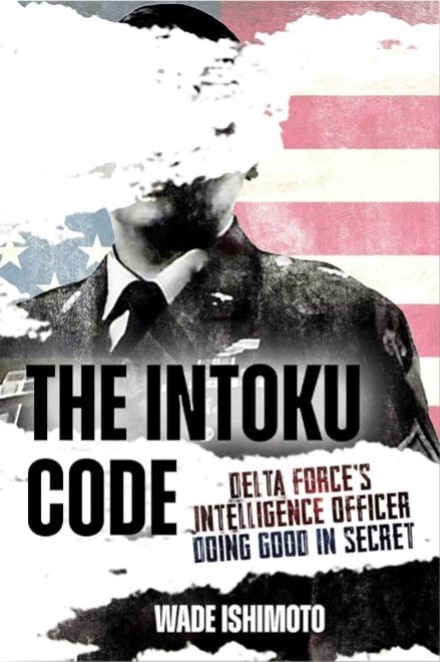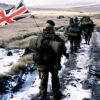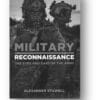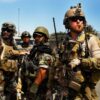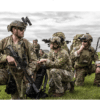ISIN 1636244696, Casemate, October 2024, 545 pages, $14.40 (hardcover)
Reviewed by: Nancy E. Blacker, National Defense University, Washington, D.C., USA
Wade Ishimoto’s book, The Intoku Code, is chock-full of stories from his fascinating career of selfless service. The book shares his watchword, “Intoku,” which he describes as “Japanese for doing good in secret.” His main message shines through each chapter, illustrated by people who do—and do not—embody the Intoku code or spirit. After reading the book, you cannot help but recognize the Intoku Code and begin to see it in your own mentors. His storytelling has a clear purpose: to ensure that the spirit of this code lives on, and that these personal anecdotes serve as lessons to influence leaders of character.
I met Wade Ishimoto once at the Joint Special Operations Command (JSOC) during a temporary duty (TDY) trip to Fort Bragg, North Carolina. When I heard he was on our agenda, I eagerly awaited his talk to learn firsthand what happened at Desert One during Operation Eagle Claw—the failed rescue of U.S. hostages in Iran. Captain (at the time) Ishimoto mesmerized our group with his candid narrative. He made us feel as if we were there, observing the operation live. Based on that experience, I jumped at the opportunity to read his book. I wasn’t familiar with the concept of Intoku during his lecture, but after reading The Intoku Code, I can say with confidence that he embodies it.
The book lays out his upbringing and early influences before joining the military. His first chapter, titled “The Forging of a Warrior,” tells you all you need to know about how he views his childhood and how he honors his elders—a quality I find admirable. Anyone who has been stationed in Hawaii and experienced its beauty and culture will recognize those elements in Ishimoto’s early years. The first part of the book is filled with youthful adventures, each rounded out with a resounding “so what” that imparts a lesson. He speaks of learning humility by hearing relatives’ stories of their impoverished upbringing, while also recognizing the value of hard work and kindness. For example, he recalls stories of his grandmother bleaching rice bags and sewing them into shirts for his father, and how his grandfather saved a neighbor’s home from burning during the attack on Pearl Harbor—acts of courage and selfless service. Growing up in a tight-knit family instilled in him the values of honor, teamwork, high standards, and tradition.
His accounts of joining the Army follow typical training escapades and convey his pride in being part of the institution. Whether in Vietnam, joining Special Forces, or helping to stand up Delta Force, Ishimoto consistently reinforces the mantra that leaders should take care of others. These chapters are filled with engaging anecdotes—some humorous, some tragic. Soldiers who’ve had similar experiences will no doubt recognize parts of themselves or their teammates in these stories. One of the most relatable leadership lessons he shares involves walking into a unit with low morale. He found highly trained Special Forces soldiers doing trivial work. After reflecting and observing, he and his master sergeant overhauled the team’s workload, making it more meaningful and productive, which significantly improved morale and self-esteem. This may sound like Leadership 101, but it’s not always the order of the day. Those who embody the Intoku Code find ways to bring purpose and discipline to their teams.
Embedded within these stories are fascinating insights into the origins of special operations as a recognized force under President Kennedy, and later the formation of Delta Force under then-Captain Charlie A. Beckwith and General Robert C. Kingston. Other names surface as the Delta concept matured, and Ishimoto’s remarkable memory pays homage to many of those who helped bring the organization from idea to full operational capability (1962–1977), underscoring the importance of perseverance. He emphasizes the value of relationship-building and interagency partnerships. Ishimoto notes, “Initial efforts to establish partnerships and relationships with the FBI, CIA, FAA, Secret Service, Army INSCOM, DOE, and DARPA proved to be beneficial as Delta developed into a mature organization.” He goes on to state that these were not the only organizations Delta engaged with as it found its footing. The chapter gives readers an honest view of the challenges involved in creating a new organization, testing new concepts, and implementing them in high-risk scenarios. Once again, Intoku principles permeate these examples.
The middle of the book provides a detailed account of Operation Eagle Claw. Ishimoto walks through the planning process, the tragic execution, and the aftermath, including an investigation and the Holloway Commission’s congressional report. One striking detail I had never heard elsewhere: upon returning to base after the loss of eight operators, some British allies had crafted a handwritten sign that read, “[T]hanks for the guts to try.” Other friends shared words only warriors can offer one another—words Ishimoto recognized as embodying Intoku.
After the turmoil of Eagle Claw, Ishimoto goes “back to business,” as Chapter 15 is titled. He offers captivating insights into domestic incidents (e.g., the Branch Davidians) and international ones (e.g., the Khobar Towers bombing). He also lent his expertise to senior civilian leaders at the Pentagon and in the corporate sector. By the time readers finish this book, they will feel fortunate to have learned from Ishimoto’s deep well of expertise, knowledge, and warrior ethos. If I have one critique, it’s that the book may include too many names and details of people and places. While it is accessible to a general audience, readers who have served in the military or grown up in a military environment may find deeper resonance with its stories. Impatient readers might find the density of references overwhelming. That said, this is a fascinating, insightful, and important account of history as it happened. More than that, it offers a code to live by—and what could be better than that?
